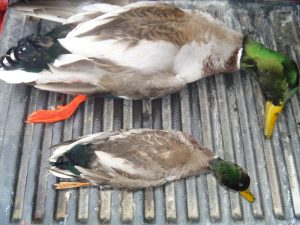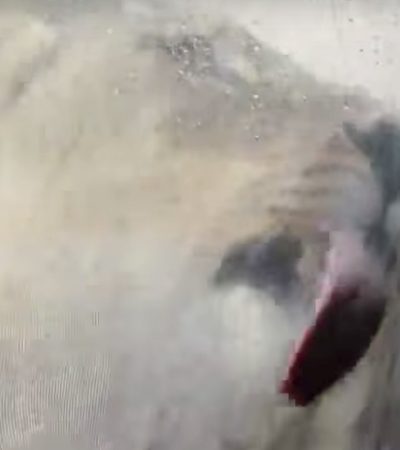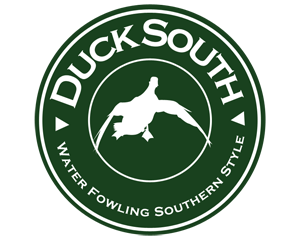Have you ever heard the legend of red legged ducks? These are thought to be the big birds from the far, far north, usually late to migrate, and all sporting bright red legs when they do arrive. They might not show up before late December, the timing being dependent upon where you live. As interesting as that story is there is a scientific explanation. As days pass by in the fall, days become shorter, and weather changes through the winter so do the hormones and diet of ducks. These changes are the real causes for red legs and large body size-each being tied to breeding activity and migration patterns.
 Puddle ducks pair up in the winter, many months in advance of when actual nesting occurs in the Prairie Pothole region. Body weight and size, plumage coloration, and performance displays help individual ducks advertise their mating abilities. Consequently, most puddle ducks must fatten up before they can successfully compete for a mate. These stored body fats are usually obtained while on southern migration. One of main reasons you will hear me say on any successful farm or club there should always be a great mixture of proteins (invertebrates found in moist soil) and carbs (found in grain crops).
Puddle ducks pair up in the winter, many months in advance of when actual nesting occurs in the Prairie Pothole region. Body weight and size, plumage coloration, and performance displays help individual ducks advertise their mating abilities. Consequently, most puddle ducks must fatten up before they can successfully compete for a mate. These stored body fats are usually obtained while on southern migration. One of main reasons you will hear me say on any successful farm or club there should always be a great mixture of proteins (invertebrates found in moist soil) and carbs (found in grain crops).
So, the real reason you do not see hefty, red-legged mallards early in the fall is because pair bonds have not been formed, breeding hormone levels are low, and summer fat reserves have been depleted from the long flight. Quality of habitat and an abundance of foods on key migration and wintering areas are critical in aiding the annual events that ultimately influence reproductive success.
Red leg ducks are a real thing, but just not red legged for the reasons you have thought in the past. They didn’t just get here from a long flight from North Dakota last night. It is just nature taking its normal pattern it takes every winter during the migration.
Some information gathered from Ducks.org





